Abstract
The alpha-hemolytic Escherichia coli strain C134-73 Hly+ was primarily cytocidal to human blood monocytes and granulocytes in vitro in the presence of fresh autologous plasma. Monocytes and granulocytes underwent marked morphological changes during incubation with the bacteria, and the percentages of intact phagocytes decreased progressively with the time of incubation. The cytotoxic effect increased with the number of bacteria per phagocyte and was produced by log-phase microorganisms only. Neither free hemolysin nor free cytotoxic activity to leukocytes could be detected in the incubation medium if the bacteria were removed from the test system. Bacteria-free culture supernatants containing alpha-hemolysin were cytotoxic to monocytes, granulocytes, and lymphocytes, monocytes and granulocytes being the most sensitive. However, this effect was abolished by fresh autologous plasma. Two nonhemolytic strains, a mutant derivative of C134-73 Hly+ and strain X43, were not cytotoxic. These observations suggest that alpha-hemolysin associated with the bacterial cells may enhance the virulence of E. coli by injuring phagocytes, whereas free alpha-hemolysin may be of minor importance because its cytotoxic effect is neutralized by host plasma.
Full text
PDF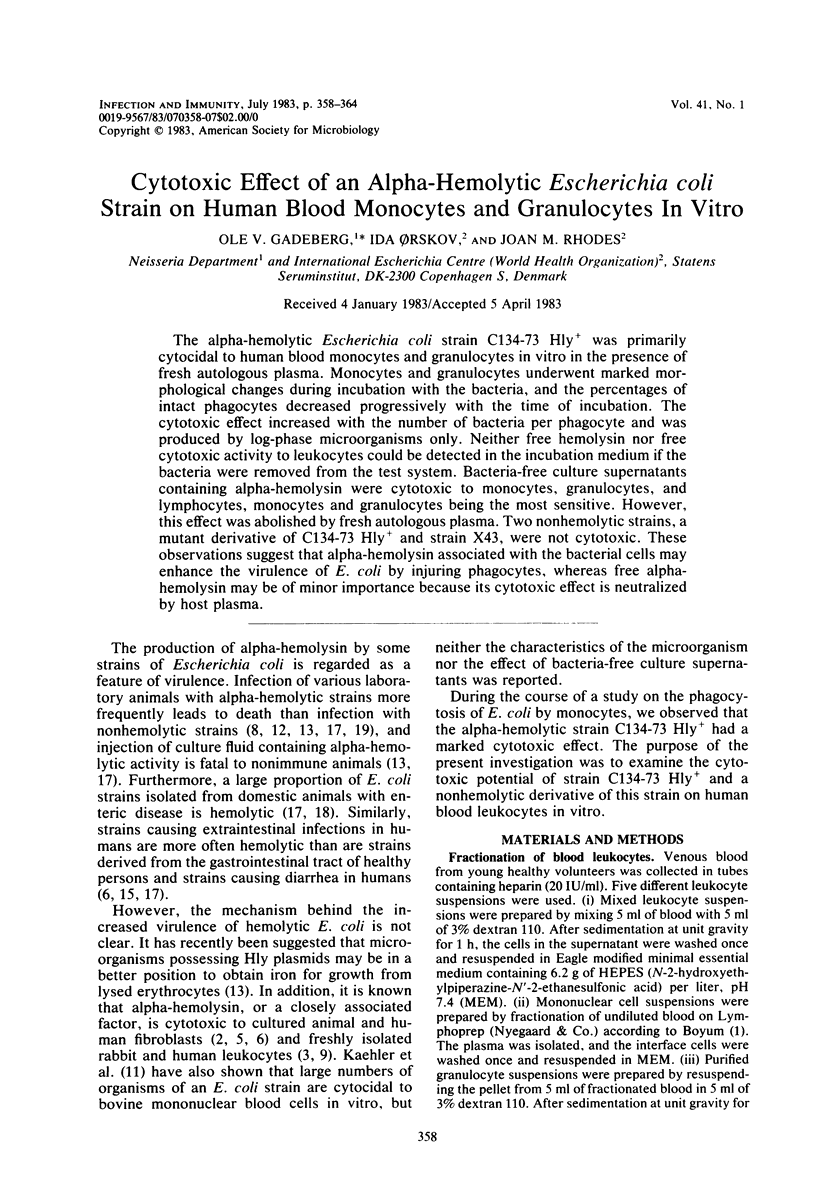
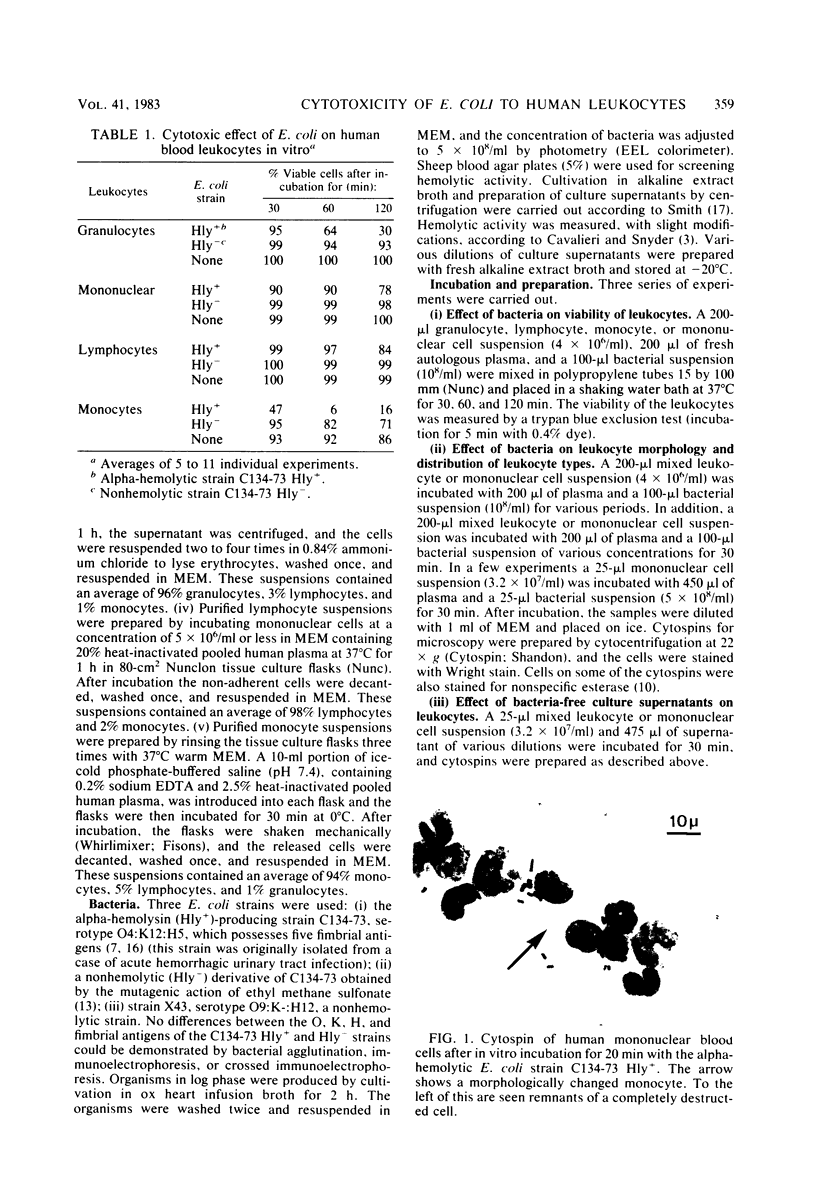

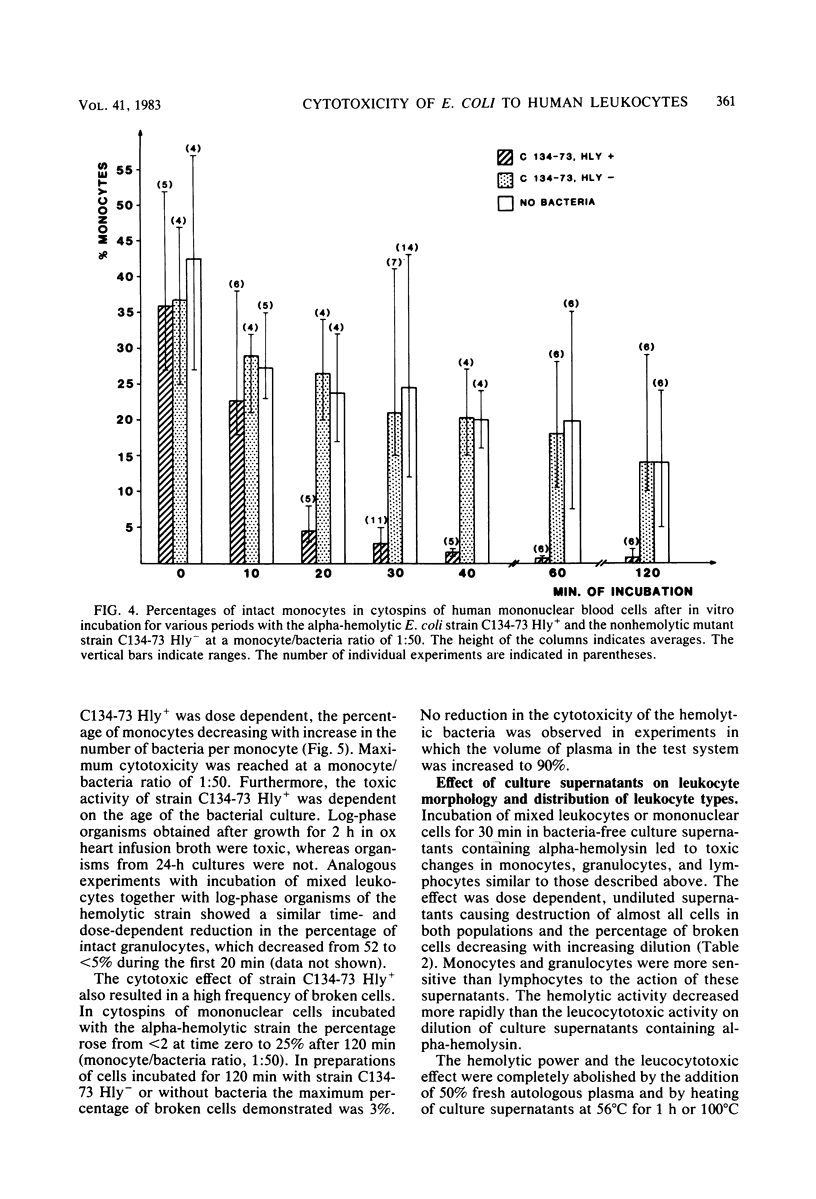
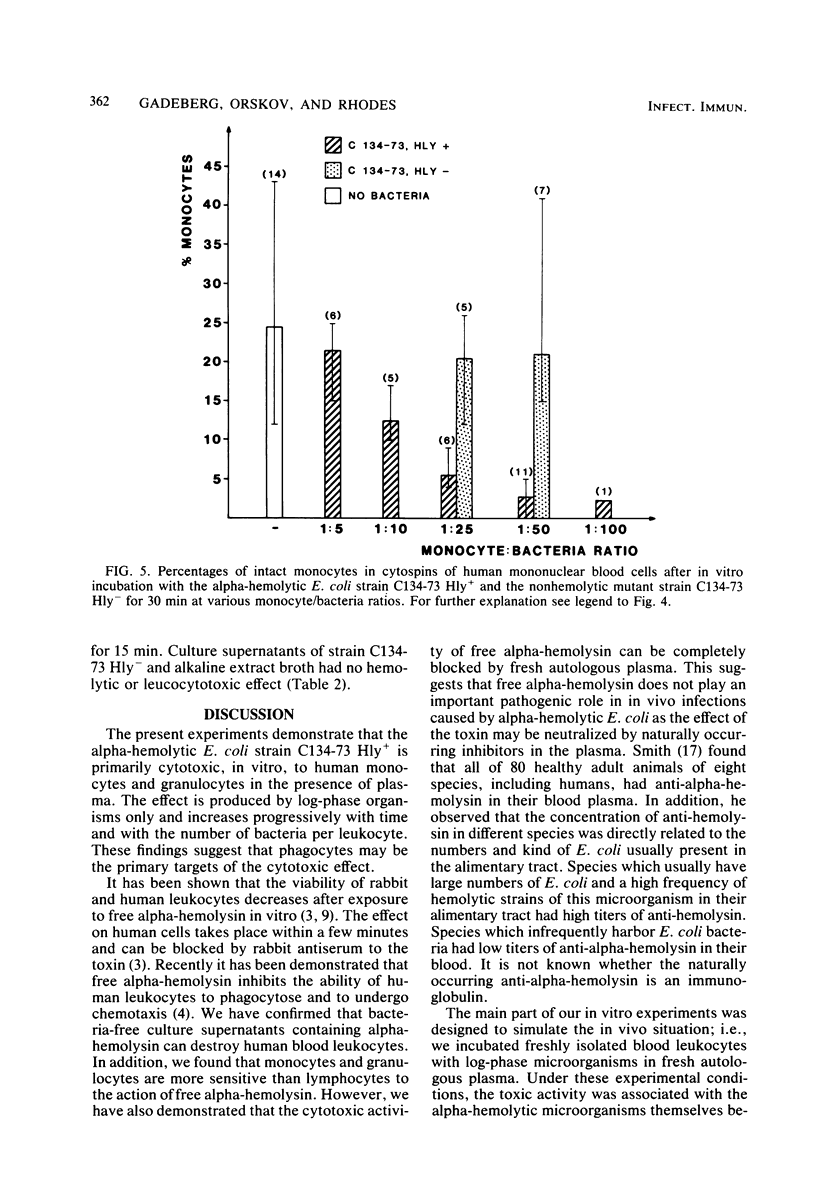
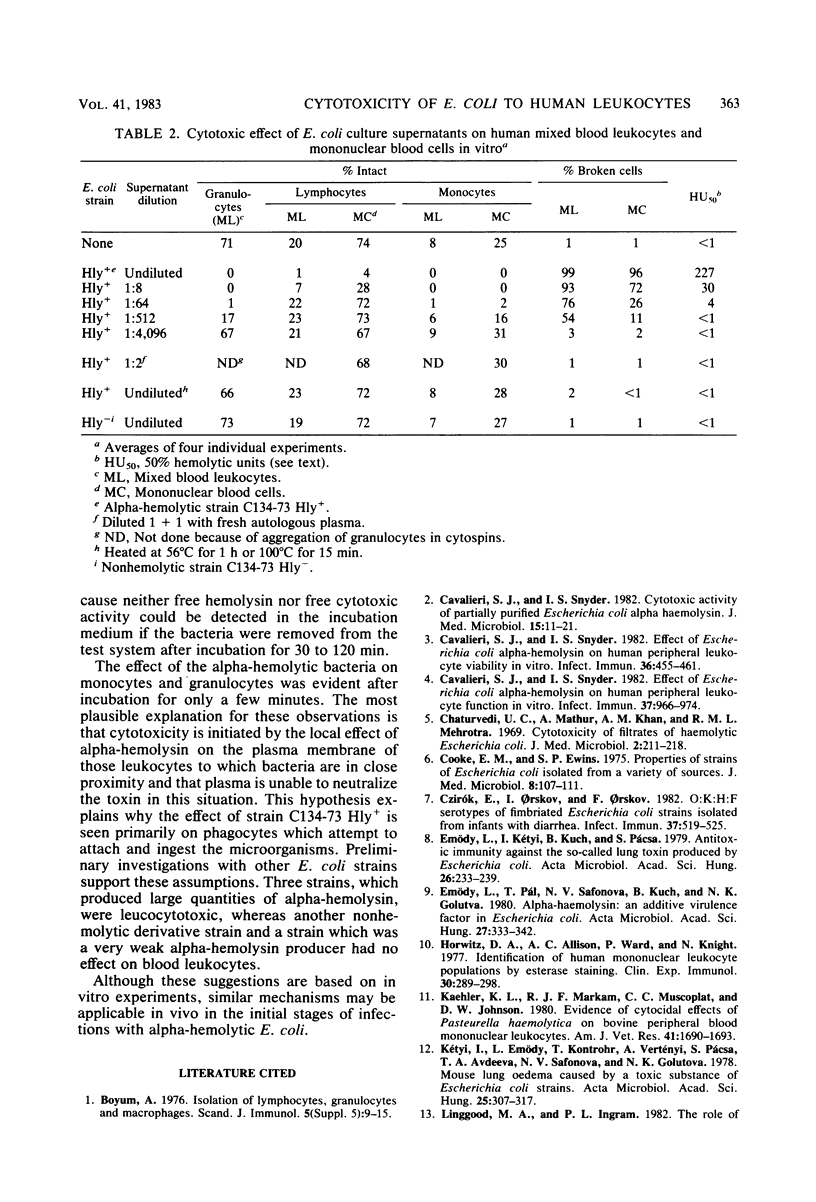
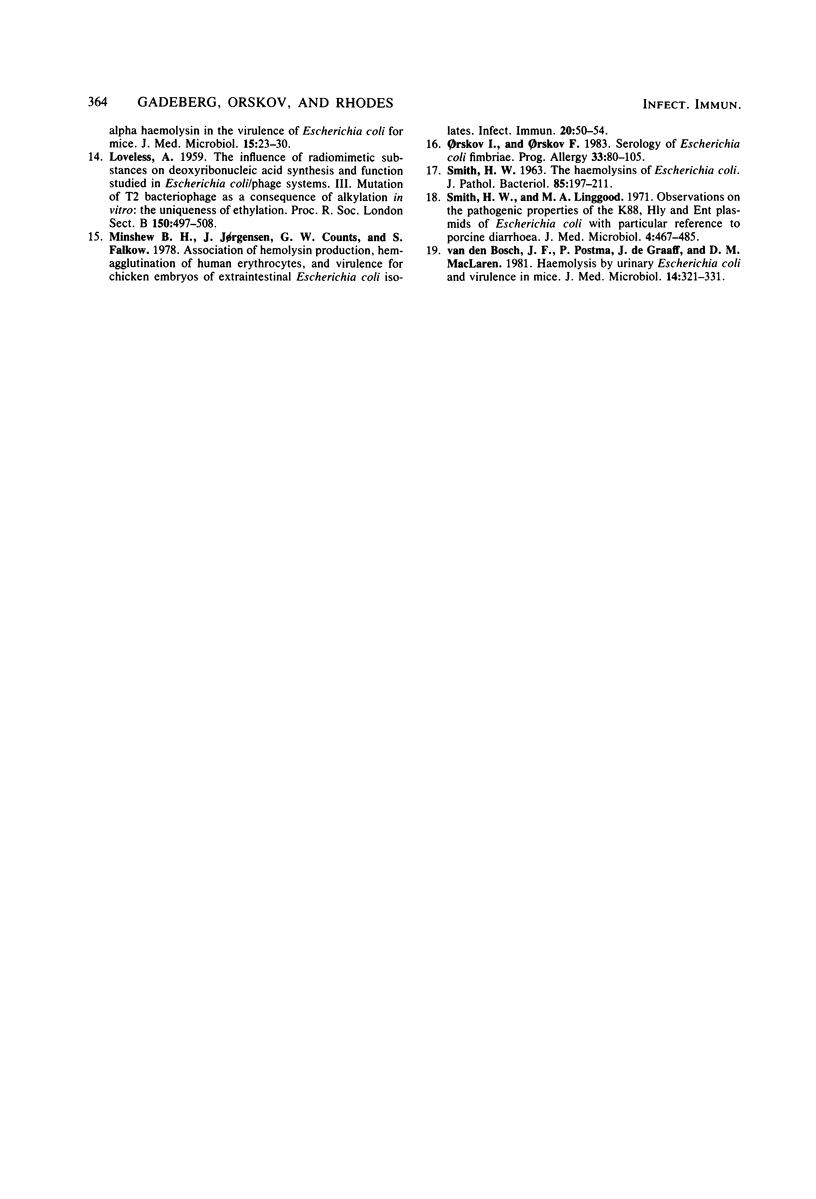
Images in this article
Selected References
These references are in PubMed. This may not be the complete list of references from this article.
- Bøyum A. Isolation of lymphocytes, granulocytes and macrophages. Scand J Immunol. 1976 Jun;Suppl 5:9–15. [PubMed] [Google Scholar]
- Cavalieri S. J., Snyder I. S. Cytotoxic activity of partially purified Escherichia coli alpha haemolysin. J Med Microbiol. 1982 Feb;15(1):11–21. doi: 10.1099/00222615-15-1-11. [DOI] [PubMed] [Google Scholar]
- Cavalieri S. J., Snyder I. S. Effect of Escherichia coli alpha-hemolysin on human peripheral leukocyte function in vitro. Infect Immun. 1982 Sep;37(3):966–974. doi: 10.1128/iai.37.3.966-974.1982. [DOI] [PMC free article] [PubMed] [Google Scholar]
- Cavalieri S. J., Snyder I. S. Effect of Escherichia coli alpha-hemolysin on human peripheral leukocyte viability in vitro. Infect Immun. 1982 May;36(2):455–461. doi: 10.1128/iai.36.2.455-461.1982. [DOI] [PMC free article] [PubMed] [Google Scholar]
- Chaturvedi U. C., Mathur A., Khan A. M., Mehrotra R. M. Cytotoxicity of filtrates of haemolytic Escherichia coli. J Med Microbiol. 1969 Aug;2(3):211–218. doi: 10.1099/00222615-2-3-211. [DOI] [PubMed] [Google Scholar]
- Cooke E. M., Ewins S. P. Properties of strains of Escherichia coli isolated from a variety of sources. J Med Microbiol. 1975 Feb;8(1):107–111. doi: 10.1099/00222615-8-1-107. [DOI] [PubMed] [Google Scholar]
- Emödy L., Kétyi I., Kuch B., Pácsa S. Antitoxic immunity against the so-called lung toxin produced by Escherichia coli. Acta Microbiol Acad Sci Hung. 1979;26(3):233–239. [PubMed] [Google Scholar]
- Emödy L., Pál T., Safonova N. V., Kuch B., Golutva N. K. alpha-Haemolysin: an additive virulence factor in Escherichia coli. Acta Microbiol Acad Sci Hung. 1980;27(4):333–342. [PubMed] [Google Scholar]
- Horwitz D. A., Allison A. C., Ward P., Kight N. Identification of human mononuclear leucocyte populations by esterase staining. Clin Exp Immunol. 1977 Nov;30(2):289–298. [PMC free article] [PubMed] [Google Scholar]
- Kaehler K. L., Markam R. J., Muscoplat C. C., Johnson D. W. Evidence of cytocidal effects of Pasteurella haemolytica on bovine peripheral blood mononuclear leukocytes. Am J Vet Res. 1980 Oct;41(10):1690–1693. [PubMed] [Google Scholar]
- Kétyi I., Emödy L., Kontrohr T., Vertényi A., Pácsa S., Avdeeva T. A., Safonova N. V., Golutova N. K. Mouse lung oedema caused by a toxic substance of Escherichia coli strains. Acta Microbiol Acad Sci Hung. 1978;25(4):307–317. [PubMed] [Google Scholar]
- Minshew B. H., Jorgensen J., Counts G. W., Falkow S. Association of hemolysin production, hemagglutination of human erythrocytes, and virulence for chicken embryos of extraintestinal Escherichia coli isolates. Infect Immun. 1978 Apr;20(1):50–54. doi: 10.1128/iai.20.1.50-54.1978. [DOI] [PMC free article] [PubMed] [Google Scholar]
- SMITH H. W. The haemolysins of Escherichia coli. J Pathol Bacteriol. 1963 Jan;85:197–211. doi: 10.1002/path.1700850119. [DOI] [PubMed] [Google Scholar]
- Smith H. W., Linggood M. A. Observations on the pathogenic properties of the K88, Hly and Ent plasmids of Escherichia coli with particular reference to porcine diarrhoea. J Med Microbiol. 1971 Nov;4(4):467–485. doi: 10.1099/00222615-4-4-467. [DOI] [PubMed] [Google Scholar]
- van den Bosch J. F., Postma P., de Graaff J., MacLaren D. M. Haemolysis by urinary Escherichia coli and virulence in mice. J Med Microbiol. 1981 Aug;14(3):321–331. doi: 10.1099/00222615-14-3-321. [DOI] [PubMed] [Google Scholar]





